Exporting goods internationally represents a fantastic growth opportunity for many companies. But when you get right down to it, international shipping regulations and processes can be daunting.
Don’t panic: we’ve put together everything you need to ship your products abroad with complete peace of mind, in a checklist of six practical steps.
Know the regulations of the countries to which you are shipping your goods
First of all, you can’t export goods internationally without a thorough knowledge of the regulations in the countries to which you’re sending your products.
International trade in goods is regulated by Incoterms, short for International Commercial Terms. There are eleven Incoterms, which set out the standard contractual provisions for the international transport of goods.
These incoterms are defined every decade by the International Chamber of Commerce. In practical terms, they are three-letter codes that help all parties involved in the carriage of goods to understand their responsibilities.
In particular, these codes define the rules for international freight with regard to :
- Responsibility for shipping costs
- Liability for insurance costs
- Responsibility for import costs
- Responsibility for customs clearance
- Liability for transport
The incoterm most often used by e-tailers is DAP(Delivered at Place). This stipulates that the seller is responsible for bearing the costs and risks until the goods arrive at their final destination. The buyer is responsible for all import and customs costs.
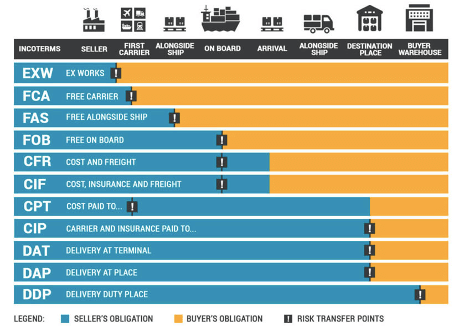
Source : Wiccservices
So be sure to study all the incoterms on the CCI website closely, to choose the best ones for your merchandise export needs. Make sure you also mention them in your general terms and conditions of sale, so that the process is clear for your customers too.
Choosing between different modes of transport
To ship goods internationally, you can choose between three different modes of transport: road freight, sea freight or air freight.
Each of these modes of transport will involve different costs, different delivery times and different logistics processes. For example, sea freight and air freight are subject to greater market volatility. They also apply the principle of invoicing by volumetric weight. They will therefore ask you to take care to limit the weight-volume of your shipments if you use them.
To find out more about transport costs on these different international freights, see our article “Calculating the price of transporting goods: what you need to know to reduce your costs”.
Managing your export customs duties and taxes
One of the thorniest issues in international freight transport is probably customs duties and taxes. These will differ depending on the country to which you are exporting your goods.
On the one hand, exporting goods to the European Union or French overseas departments is regulated by intra-Community trade, which is not subject to customs formalities.
Exports of goods outside the EU are subject to more complex formalities. These formalities are compulsory, and must be carried out via the customs office with which your company is established. This office will process the export declaration, check your goods and finally issue the release (i.e. the authorisation to remove the goods).
Once you have completed the formalities for exporting outside the EU, the customs authorities will issue you with documents such as :
- The export accompanying document (EAD)
- The accompanying document(DocAcc)
- TIR carnet
These documents must be attached to your goods during transport, so that the customs authorities can check them at every stage of your supply chain.
Preparing the right invoices for exporting goods
Another document that needs to be attached to your other export documents is your commercial invoice. This will be used by foreign customs authorities to check your goods on import, estimate their value and settle any applicable customs duties.
This commercial invoice must be written in English and include all the information needed to trace the products.
In particular, be sure to include :
- Invoice number
- Details of the exporter and importer of the products
- The international consignment note
- A detailed description of your goods
- The country or territory of manufacture of your products
- The exact unit value of the products exported
Selecting reliable carriers
Just like your deliveries within France, your goods exports must be handled by a transport service provider who offers fast, flexible deliveries that are easy to trace for both you and the customer.
Make sure you check everything that is on offer in terms of international transport services:
- What responsibilities are assumed in the event of loss or breakage of your parcels?
- Does the service provider take care of customs clearance or not?
- What insurance do they offer?
On this last point, if your carrier does not offer sufficiently attractive insurance, you may need to turn to your insurance company, particularly for your export of valuables. The insurance company may be able to offer you ad valorem insurance: it could then reimburse the full amount of the loss suffered on your order, and take action against the carrier if necessary.
To make the right choice of carrier, don’t hesitate to issue regular invitations to tender, based on an exhaustive list of your requirements. The aim is to find the service provider that offers the best possible quality of delivery at the right price.
| Be careful! Some carriers include surcharges in their practices that can quickly add to your logistics costs.
In particular, some will charge you extra for :
|
Choosing the right packaging for export
The final item to include in your merchandise export checklist is the packaging in which your products will be transported. This must be chosen with care, to protect your goods as well as possible, but also to ensure an optimal customer experience when they are received by the recipient.
For road or air shipments
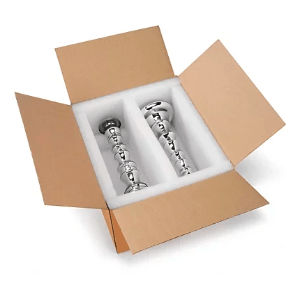
For shipments by road or air freight, it is advisable to choose suitable cardboard packaging. These are designed with different flutes, which provide more or less protection for your products depending on their weight.
You should also make sure that you select an appropriate cushioning material, which will give your goods extra protection and ensure that they are well secured in the export packaging. Kraft paper, bubble wrap, packing particles, foam sheets: there’s a wide choice, depending on the protection needs of your products.
| Strapping: the little extra to protect your parcels even better
To ensure the safety of your contents, to group several parcels together, or to facilitate handling and guarantee the stability of loads on a pallet, you can opt to strap your packaging. What’s more, by using seals, this method of securing parcels makes them tamper-proof. These seals also offer traceability and identification of shipments thanks to their unique numbering. To find out more, discover all our best practices in parcel strapping. |
For sea shipments
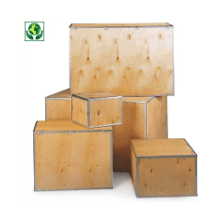
For your sea freight shipments, or for your very fragile shipments, it’s crucial to havea wooden crate. This type of packaging is ideal for export shipments, as it provides the best possible protection for goods during rough transport.
For shipments outside the European Economic Community (EEC), your wooden crate must comply with ISPM15. This standard applies to raw wood packaging thicker than 6 mm, and ensures that the packaging is treated at high temperature to prevent the spread of harmful organisms from one continent to another.
Wooden crates are available in different thicknesses (6 mm or 18 mm) to ensure that your most fragile products are well protected during shipment.
| Need to ship dangerous products?
The regulations governing the export of dangerous goods differ depending on the mode of transport used – ADR (road transport), IMDG (sea transport), IATA (air transport) and RID (rail transport). Whichever mode of transport you choose, you need specially approved crates that meet UN export standards. These should be combined with vermiculite – a material that absorbs liquids if your packaging leaks. You should also label your packaging so that you can directly identify the UN code of the hazardous product in question, making it easier to export. |
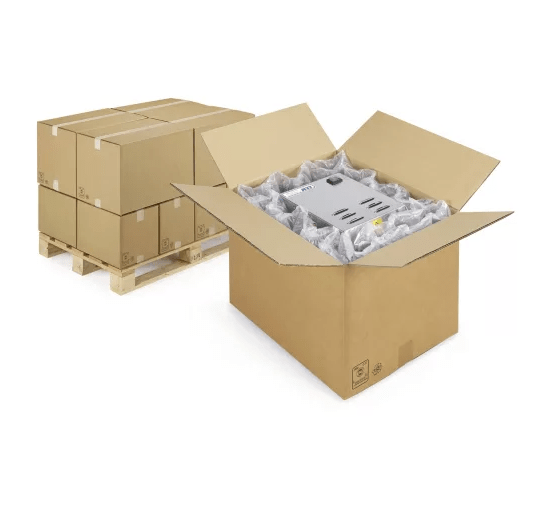 |
RAJA palletisable brown double flute reinforced cardboard box in reinforced cardboard for heavy products and export. |
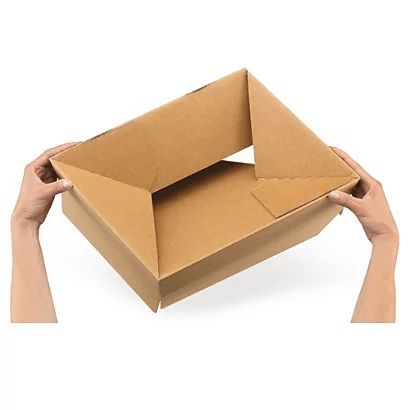 |
Double flute brown cardboard box for instant assemblyVery secure and protective: bottom reinforced by a double layer of cardboard preventing access to contents. |
To ship your products on pallets
If you’re planning to export your goods in bulk, shipping by pallet may be an option.
To do this, you first need pallets that are suited to your needs. Pallets come in a range of sizes and materials, including :
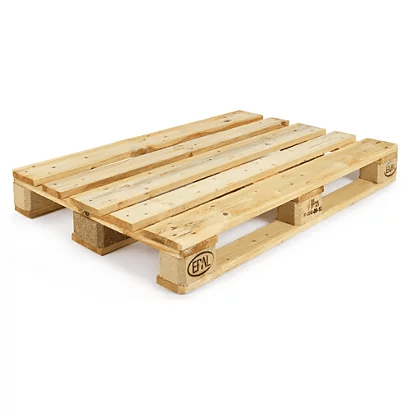 |
The traditional wooden pallet, to be chosen in multi-rotating form for easy handling with pallet trucks. Be careful to choose them for heavy or medium-heavy loads, depending on the weight of the products to be shipped. |
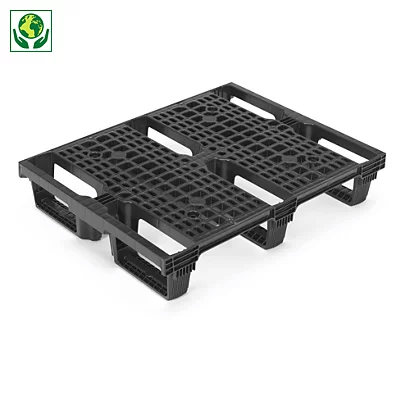 |
100% recycled plastic palletsThis is both eco-responsible and safe, since it has no nails or sharp edges and cannot cause splinters. It also avoids the need for treatment to comply with ISPM15 standards. |
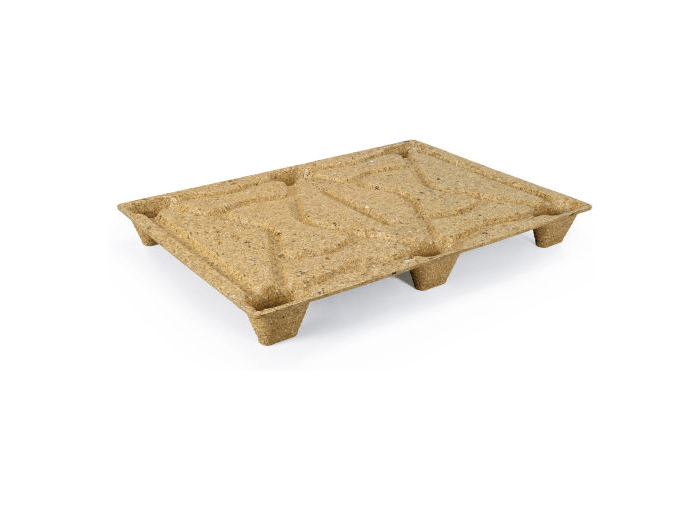 |
Moulded wood palletsThe moulded wood pallet, made from 80% recycled, moulded and compressed wood waste, is also safe to handle. |
In addition to suitable pallets, you also need crates to protect your products properly. Here again, there’s a wide choice:
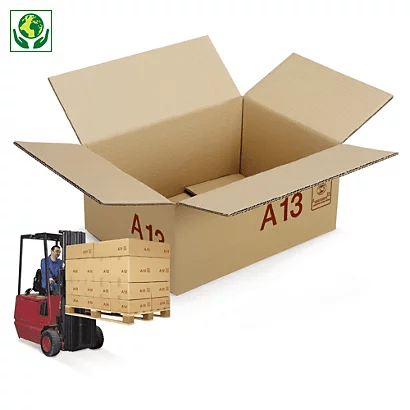 |
Palletisable crates optimise storage space during transport. Available in formats that adapt perfectly to the dimensions of a pallet, they guarantee stability and uniformity. So your products arrive at their destination in good condition.
They are available in double flute, reinforced double flute or triple flute, depending on the strength requirements of the crate. |
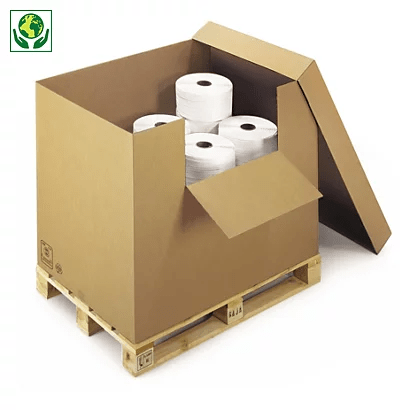 |
The case with flap and lid in reinforced double-flute will enable you to fill your pallets quickly and efficiently for international export. |
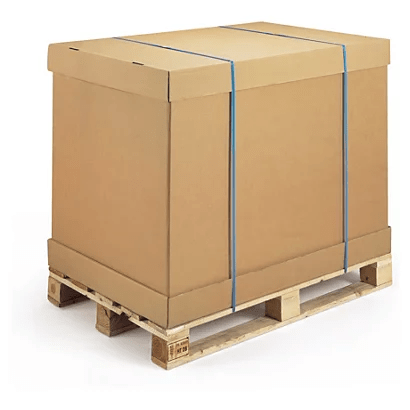 |
The modular container box can be used in several ways. By using only the belt and the lid, you can protect a product placed directly on the pallet. Add a base, and you can ship products loaded in bulk inside. |
Finally, to complete the palletising process and protect your pallets, use cast stretch film, which can be applied to the packaging either using a wrapping machine or by hand. Choose an opaque film if you want to guarantee the confidentiality of your pallets, or one in a different colour for quick identification of the products inside.
To find out more, read our guide to starting up or optimising your palletising process.
To protect your products from moisture and corrosion
Excess moisture can cause damage such as mould formation, softening or oxidation.
- Desiccant bag To protect products from moisture and prevent water from forming in the packaging.
- VCI anti-corrosion plastic zip bag To be used with desiccant bags to further reduce the effects of condensation; highly resistant to tearing and bursting, can be recycled after sorting in the company.
- Reinforced tar paper For lining cardboard or wooden crates to make them waterproof
- VCI anti-corrosion paper to protect metal parts against rust and oxidation
To present your export documents
As you read earlier, you must clearly display on your packaging the export documents issued to you by the relevant authorities, as well as your commercial invoice.
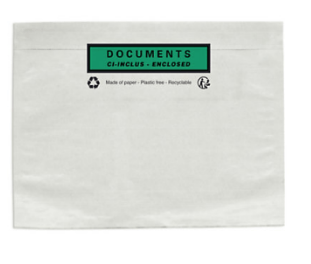
To do this, choose document pouches that are sturdy, transparent and resistant to climatic variations.
Don’t forget the little extras: labels
To ensure that your goods arrive safely and in good condition, you may need to add labels to your packaging to indicate the specific handling conditions they require.
For example, think :
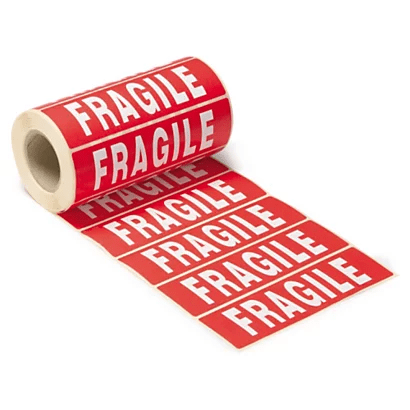 |
Fragile” labels |
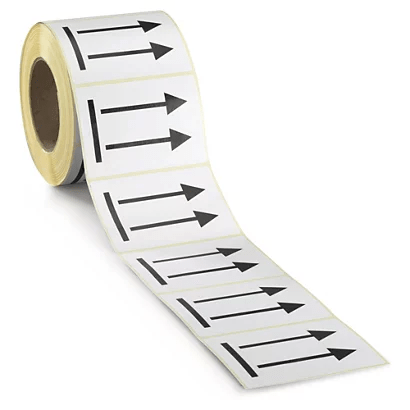 |
Labels indicating the direction of handling of the package |
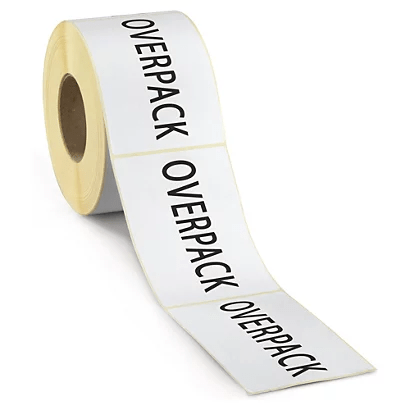 |
Labels indicating overpacking (or overpack ) labels |
By following the six steps in this practical checklist, you’ll be all set to export your goods with peace of mind – and your customers will be completely satisfied!















